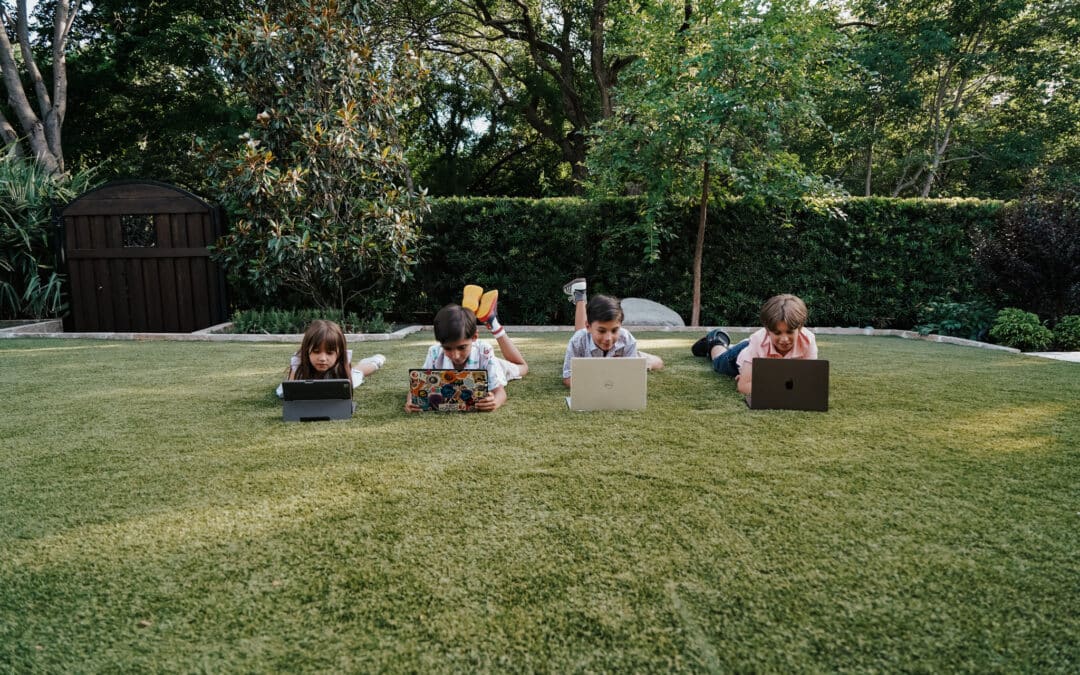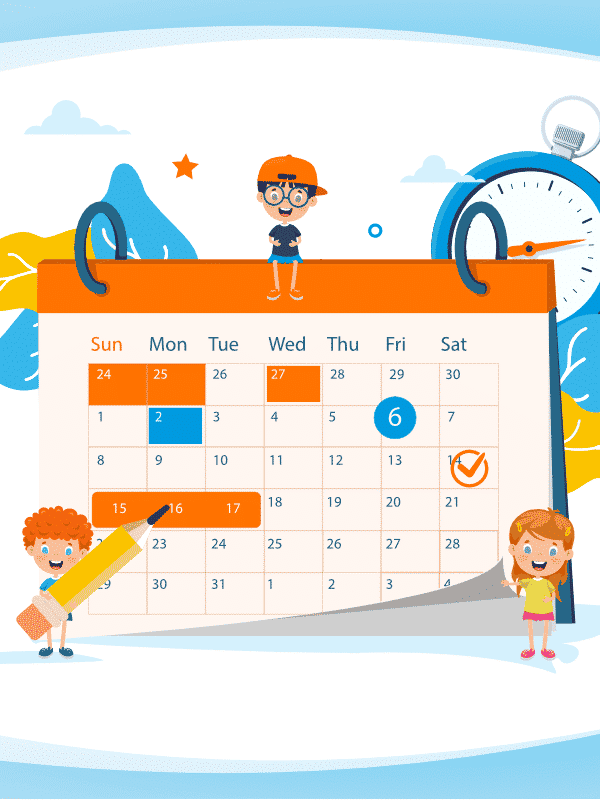So you finally signed up your little one for Spanish lessons, it has been a while, but now you’re wondering:
How do I know if my kid is actually learning Spanish?
Maybe they sing a few songs, maybe they shout hola to their teacher, but you’re not sure if anything’s really sticking.
Don’t worry, this is one of the most common questions we get from parents.
And as a teacher (and a mom), I can tell you that language learning progress in kids doesn’t always look the way you expect.
So here’s how to know if your kid is actually learning Spanish, even if they’re not saying full sentences yet.
1. They Understand Before They Speak
This is the first and most important sign that your child is learning Spanish successfully.
Children always develop comprehension before conversation, it’s how they learned their first language, too!
You’ll know your child is understanding when they:
- Follow basic instructions in class (“¡Siéntate!” or “Busca el color azul.”)
- Giggle or react when the teacher says something funny in Spanish
- Look at or respond to Spanish cues
If you’re seeing these signs, you already know your kid is actually learning Spanish, even if they’re quiet for now.
2. They Mix English and Spanish (and That’s a Good Thing!)
If you hear phrases like, “Mami, quiero more juice”, take a deep breath because it’s a win!
This stage, called code-switching, means your child’s brain is actively organizing two languages at once.
👉 Teacher secret: kids who mix languages confidently early on tend to speak both languages more naturally later.
So yes, when they combine words, you can confidently say you know your kid is actually learning Spanish.
3. They Repeat Songs and Phrases
Songs and rhymes are powerful memory tools. If your child hums a Spanish tune, repeats phrases from class, or reacts to familiar songs, it’s a clear sign that learning is happening.
You can test this gently:
“Can you sing the Spanish song from class?”
“Can you show me what salta means?”
When you see them respond or repeat, you know your kid is actually learning Spanish because the words are becoming automatic.
4. They Respond Without Needing Translation
Understanding comes first, but how do you measure that?
Notice if your child reacts naturally to instructions like:
- “¡Ven aquí!” (Come here!)
- “¡Mira el gato!” (Look at the cat!)
Even if they don’t answer back in Spanish, comprehension means they’re internalizing vocabulary.
👉 If they respond to Spanish without needing you to translate, you definitely know your kid is actually learning Spanish.
5. They Use Spanish Words in Play
Children love to mix language into pretend play.
If their dolls suddenly say hola, or their stuffed animals start bailando, that’s real, spontaneous language use, one of the best indicators of progress.
It shows Spanish is moving from a “lesson” to a natural part of their world.
Encourage it by joining in:
“¿Qué hace el oso?” (What is the bear doing?)
“¿Dónde está el gato?” (Where’s the cat?)
Every playful moment reinforces that your child is truly learning.
6. They’re Excited for Class (Even Without Big Language Milestones)
Here’s something teachers know: joy = progress.
If your child looks forward to class, laughs with their teacher, and sings Spanish songs around the house, that emotional connection is half the battle won.
When kids love the process, they learn faster and retain more.
So yes, when you see excitement and confidence, you know your kid is actually learning Spanish, even if you don’t hear full sentences yet.
7. You Notice Small Everyday Shifts
You’ll start seeing little moments that confirm their progress:
- They greet someone with “¡Hola!”
- They recognize words like leche or agua on labels
- They correct your Spanish (it happens!)
- They repeat words from class during play
These are your clues or proof that their brain is connecting Spanish to real life.
8. You Give It Time (Consistency = Confidence)
Parents often ask, “How long before I know my kid is learning Spanish?”
The answer: a few weeks of consistent exposure.
At TruFluency Kids, we recommend at least 2–4 classes before judging results. That’s enough time for your child to get comfortable, build a bond with their teacher, and start showing comprehension.
Language learning is like watering a seed, you don’t see the sprout instantly, but growth is happening beneath the surface.
9. You Stay Encouraging (That’s the Secret Ingredient)
The best way to support your child’s Spanish journey is to make it fun and pressure-free.
Use Spanish casually at home even if it’s just a few words:
“Gracias,” “Adiós,” “¡Muy bien!”
Play Spanish music during meals, watch short videos, and celebrate every effort.
Because when kids feel proud, you’ll see progress faster, and you’ll know your kid is actually learning Spanish.
At TruFluency Kids, our teachers are experts in early childhood Spanish immersion. We focus on songs, stories, games, and movement, not memorization.
You’ll see the signs:
✨ Your child understanding.
✨ Your child smiling.
✨ Your child starting to speak naturally.
That’s how you know your kid is actually learning Spanish.
👉 Start your child’s journey today: www.trufluencykids.com
Because language learning isn’t about tests or translations —
it’s about joy, connection, and confidence that lasts a lifetime. 💛


